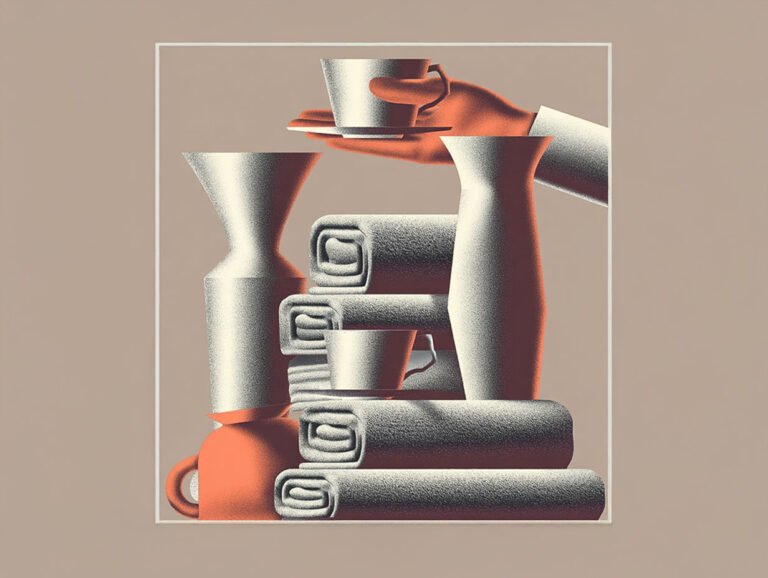As we step into 2024, the world of interior design continues to evolve, reflecting broader cultural shifts and technological advancements. This year, several trends are set to dominate homes and commercial spaces, guiding enthusiasts and professionals alike towards creating environments that are both aesthetically pleasing and functional. Here’s a look at what’s becoming fashionable in 2024 and what trends are better left behind.
What’s In: Embracing Modern Elegance and Sustainability
- Biophilic Design:
- Connection to Nature: Biophilic design, which integrates natural elements into indoor spaces, remains a significant trend. Think large windows, indoor plants, green walls, and natural light.
- Materials: Use of sustainable, organic materials like bamboo, reclaimed wood, and stone continues to rise. These materials not only enhance the aesthetic appeal but also promote environmental responsibility.
- Tech-Integrated Homes:
- Smart Homes: Integration of smart home technology is becoming more seamless. Voice-controlled assistants, smart lighting, and home automation systems are now essential features for a modern, connected lifestyle.
- Sustainable Tech: Energy-efficient appliances and systems that reduce water and electricity consumption are in demand, aligning with the growing emphasis on sustainability.
- Maximalism:
- Bold and Personalized: Maximalism is making a comeback with a twist. It’s about bold colors, eclectic patterns, and a mix of textures. Personal expression is key, with interiors reflecting individual tastes and stories.
- Layered Decor: Rich, layered decor with an array of patterns and textures creates depth and interest in living spaces. Think vibrant wallpapers, statement art pieces, and textured fabrics.
- Multifunctional Spaces:
- Flexibility: With the rise of remote work and compact living, multifunctional spaces are crucial. Furniture that adapts, such as fold-out desks and convertible sofas, is gaining popularity.
- Zoning: Creating distinct zones within open-plan spaces using rugs, lighting, or partitions helps in defining areas for work, relaxation, and entertainment.
- Warm, Earthy Tones:
- Color Palette: Warm, earthy tones like terracotta, ochre, and sage green are in. These colors create a cozy, inviting atmosphere, providing a perfect backdrop for natural materials and lush greenery.
- Accents: Complementary colors like rich burgundy, deep navy, and soft lavender add sophistication and warmth to the overall design.
- Sustainable and Vintage Furniture:
- Eco-Friendly Choices: There’s a growing preference for furniture made from sustainable materials and processes. Vintage and upcycled pieces are also highly favored, contributing to a unique and eco-conscious interior.
- Durability: Investing in high-quality, durable furniture that stands the test of time is a priority, moving away from the throwaway culture of fast furniture.
What’s Out: Moving Away from Past Trends
- Overly Minimalist Spaces:
- Sterile Aesthetics: The cold, overly minimalist interiors that dominated past years are falling out of favor. People now seek warmth and personality in their living spaces, which stark minimalism fails to provide.
- Sparse Decor: Bare walls and overly simplistic decor are being replaced with more personalized, decorated environments that feel lived-in and welcoming.
- Fast Furniture:
- Disposable Decor: The trend of fast, cheaply made furniture is declining. The focus is shifting towards sustainability, durability, and pieces that have longevity both in style and function.
- Homogeneity: Mass-produced furniture that lacks character and uniqueness is being avoided. Instead, curated, unique pieces that tell a story are preferred.
- Gray Overload:
- Monochromatic Gray: The overuse of gray, which once symbolized modernity and sophistication, is now seen as dull and uninspired. Designers are moving towards more vibrant and varied color palettes.
- Lack of Warmth: Gray interiors can feel cold and uninviting. Warmer tones and richer colors are replacing the gray-heavy schemes to create cozier, more engaging spaces.
- Open Shelving:
- Cluttered Look: While open shelving was once popular for its accessibility and display potential, it can often lead to a cluttered, disorganized look.
- Maintenance: Keeping open shelves tidy and dust-free is impractical for many. Closed cabinetry is making a comeback, providing cleaner lines and less visual noise.
Conclusion
The interior design trends of 2024 reflect a broader shift towards sustainability, personalization, and functionality. Biophilic design, smart home integration, and multifunctional spaces are leading the way. At the same time, the move away from stark minimalism, fast furniture, and gray-heavy palettes signals a desire for more warmth, personality, and eco-conscious choices. Embrace these trends to create interiors that are not only stylish and modern but also reflective of a more thoughtful and sustainable way of living.




